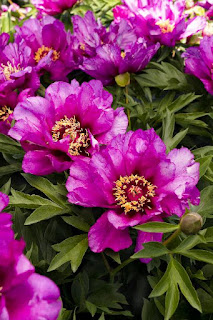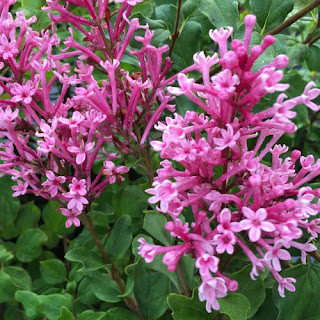Quite a day here on the mountain above Peacham Pond where we live. It started out cold but by 9 AM the light snow had changed to rain and you could actually see last night's 4 inches of fluffy snow shrink. I worked online for a couple more hours trying to figure out what happened to my personal George Africa Facebook page as well as our FB business page, Vermont Flower Farm and Gardens. Facebook, like many of the big boys, wants nothing to do with you after you get up and running unless you spend money. I have spent several years putting together 4-5000 friends but since January 4th, communication has been shut off. I have tried every approach I could find and all to no avail so I am returning to an old blog that I have always used seasonally named The Vermont Gardener. If you have a solution to my Facebook dilemma, please advise and if you liked my FB pages, join me here as I write about gardening in the northeast and using and growing Vermont hardy plants.
Yesterday I mentioned the color white and I'd like to pick up from there right now. We belong to the American Hemerocallis Society and part of the membership includes journals. I love them because as with any magazine, I can stop and start reading as time permits. Winter 2021 had a great article by Stuart Kendig who has been classifying white daylilies, both diploids and tetraploids, for several years now. He has been accompanied by half a dozen other AHS members and together they reviewed about 250 white daylilies.
Gardeners often ask for "the best white you have" but few can even name what might be acceptable to them. Stuart and his friends came up with five groups of white daylilies, separated into diploids and tetraploids. They established from the beginning that Group One would contain the whitest of all whites or as they described it "Very white and whiter than 'Gentle Shepherd' and all members of Group 2. The search for the best white had just begun so Group one remained empty. Those found in Group 2 are described as "Bright White, comparable to 'Gentle Shepherd' or 'Sagarmatha' ". Group 3 is described as "Comparitively White, but not as white as Group 2." Group 4 is "Near white but with an obvious color shade when viewed from near." And finally, Group 5 contains daylilies with "White blend that will appear white when viewed with a green background but presenting an obvious color tint."
With the group headings established, Stuart and his friends placed the first 250 daylilies in what they felt was the correct group. You need to see the entire list to get a feel for the work Stuart and friends accomplished but I placed white daylilies we grow either for sale or for display so you can get a start on the classification system. You'll have to find a copy of the original article "A Progress Report On White Daylilies" to coordinate your own classifications.
From my daylilies, Group 2 Diploids contains Gentle Shepherd. From Group 3, Diploids we grow include Joan Senior, Sunday Gloves and White Temptation. We grow one Group 3 Tetraploid named Lime Frost. In Group 4 we grow the Diploid Ice Carnival for display and Group 4 Tetraploids August Frost and Early Snow which always get a lot of attention. And finally, in Group 5 Diploids we have Vanilla Fluff and White Formal for display. Group 5 Tetraploids include Artic Snow, Frostbite Falls and Wedding Band. When you know some of the daylilies, the categories begin to make a lot of sense. In the past couple years I have picked up Pointer Sisters, White Summer and White Bread from Don and Susan Church, Blue Hill, Maine. (bluehilldaylilies.com). And from the Barth family, originally from Alna, Maine from Maine I have Sheepscot Valley Snow in both diploid, and tetraploid (I think!)
The world of daylilies is now shooting for 100,000 registrations so there are a number of white daylilies that could fit into Stuart Kendigs's Groups 2-5 and maybe even Group 1. If you get a chance, try to find the background of this project. And from me, a novice grower, many, many thanks to Stewart Kendig and friends for their much-appreciated work. Over the next couple days, I'll try to line up a few of my pictures. Be well!
























